A fairly recent addition to the antique dealer archives is some material associated with the Loughborough based antique dealer C.W. Briggs (1906-1981), acquired in January 2023 at the Nottingham auctioneers Mellors & Kirk.

The material is an eclectic mix of stock books, personal letters and ephemera, together with a selection of material associated with an exhibition of ‘Old Masters’, held at the showroom of Smart & Brown Ltd, Nottingham in February 1928 – at which the paintings had been ‘hung’ by Mr C.W. Briggs. Smart & Brown Ltd were ‘Upholsterers, Cabinet Makers and Decorators’, so it’s an intriguing story, but I’ll save the ‘Old Masters’ exhibition for another blog post on C. W. Briggs. However, some of the other material offers an interesting insight into the life and history of a mid-20th century antique dealer.
Firstly, I just love this oak-framed collage of black & white photographs of popular antiques of the period. The oak frame appears to date to the 1920s, but the collage of photographs of antique furniture are all culled from antique collecting magazines of the 1940s and 1950s, so I’d guess the composition dates from the 1950s. It was obviously something that Briggs would have placed in his antique shop to encourage people to sell antiques to him.
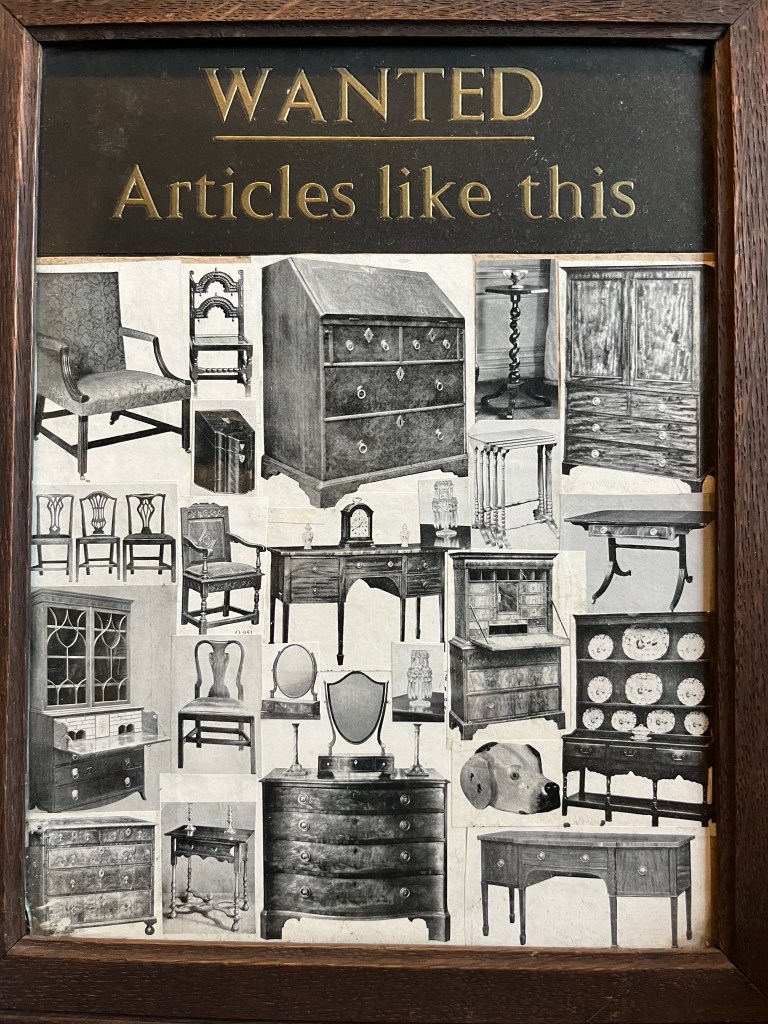
Cyril William Briggs operated as an antiques dealer from the 1920s until the mid 1970s. According to letters in the archive he passed away in August 1981. He was born in 1906 and was the son of William Henry Briggs (born c.1853), a shopkeeper and licensed victualler in Nottingham. The archive material also indicates that C.W. Briggs was in partnership with an individual called Alexander Marks in the 1920s, trading as Marks & Briggs ‘Art Connoisseurs’ at Moot Hall Chambers, Market Place, Nottingham – this is part of the business history related to the ‘Old Masters’ exhibition held at Smart & Brown Ltd in Nottingham in 1928. Here (below) is Briggs’ trade card for his shop at 10 Leicester Road, Loughborough – ‘Genuine Antiques’ is a term often associated with the antique trade of the early 20th century (when ‘fakes’ were a common concern amongst collectors and those furnishing their homes with antique furniture), so it’s interesting to see this on Briggs’ trade card.
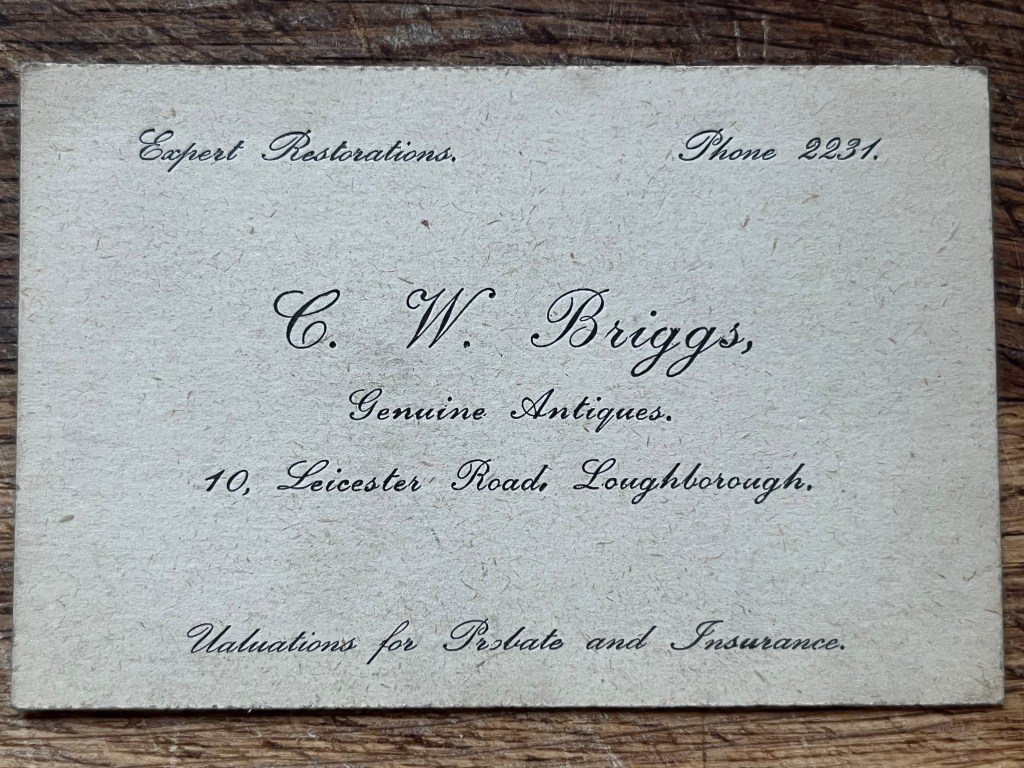
The use of the phrase ‘Genuine Antiques’ was also used by Briggs in his shop sign (see below, made of glass), where he gives a date of 1925 as the establishment of the business (this may relate to the business that he started with Alexander Marks at Moot Hall Chambers in Nottingham) – Briggs would have been just 19 years of age when he started in ‘the business’. Sadly, the hanging sign is not part of the archive (it went for a bit too much at the Mellors & Kirk auction!)
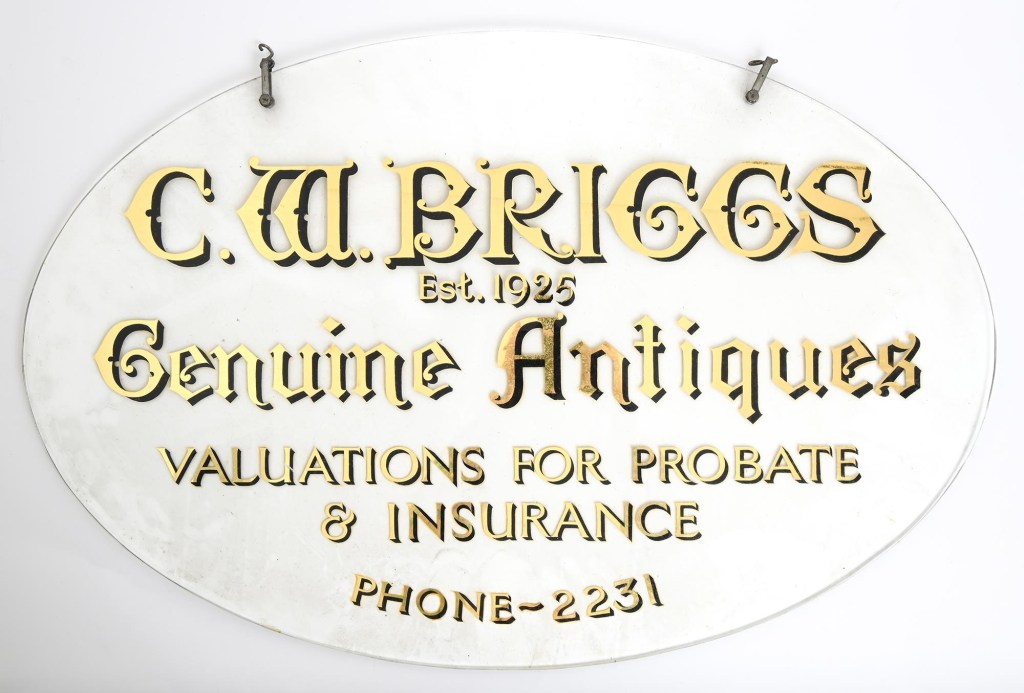
In the mid 1940s Briggs acquired ‘Kingscote’ 10 Loughborough Road, Walton-le-Wolds (he still retained his antique shop at 10 Leicester Road, Loughborough). ‘Kingscote’ is a mid-16th century timber-framed house (it was Grade II listed in 1966), and, according to a selection of photographs in the archive material, Briggs seems to have been very proud of his ‘ancient house’. Here are some photographs from the archive, showing the house and its interiors (the photos are probably from 1940s) – it looks like there was some restoration taking place.
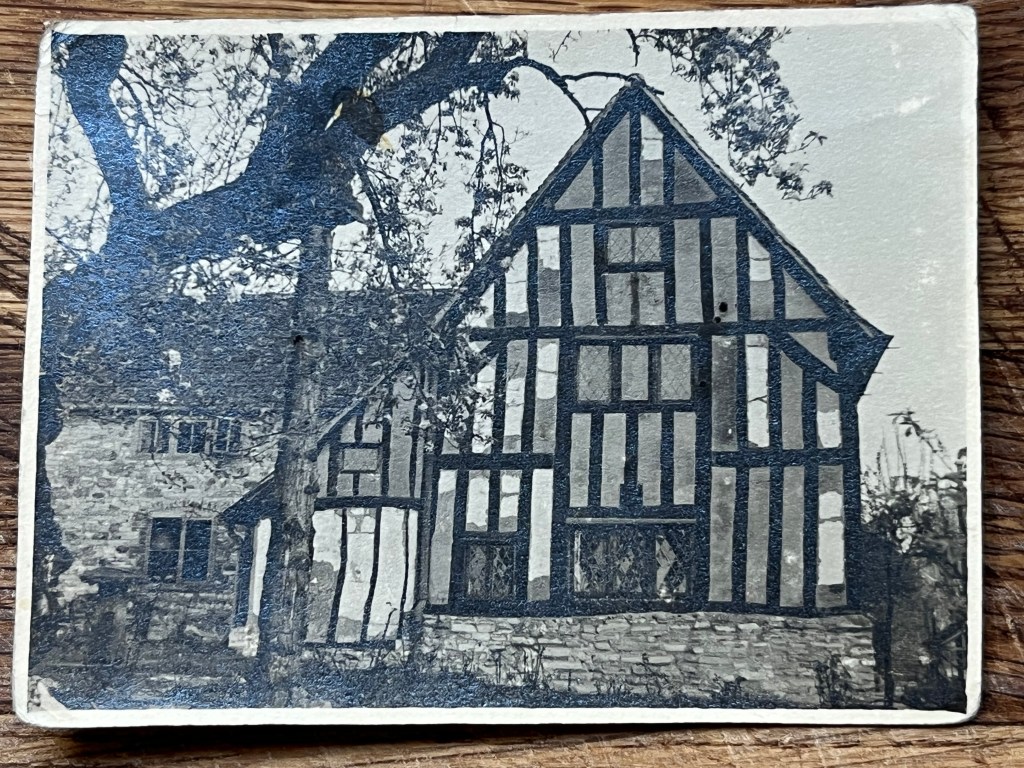
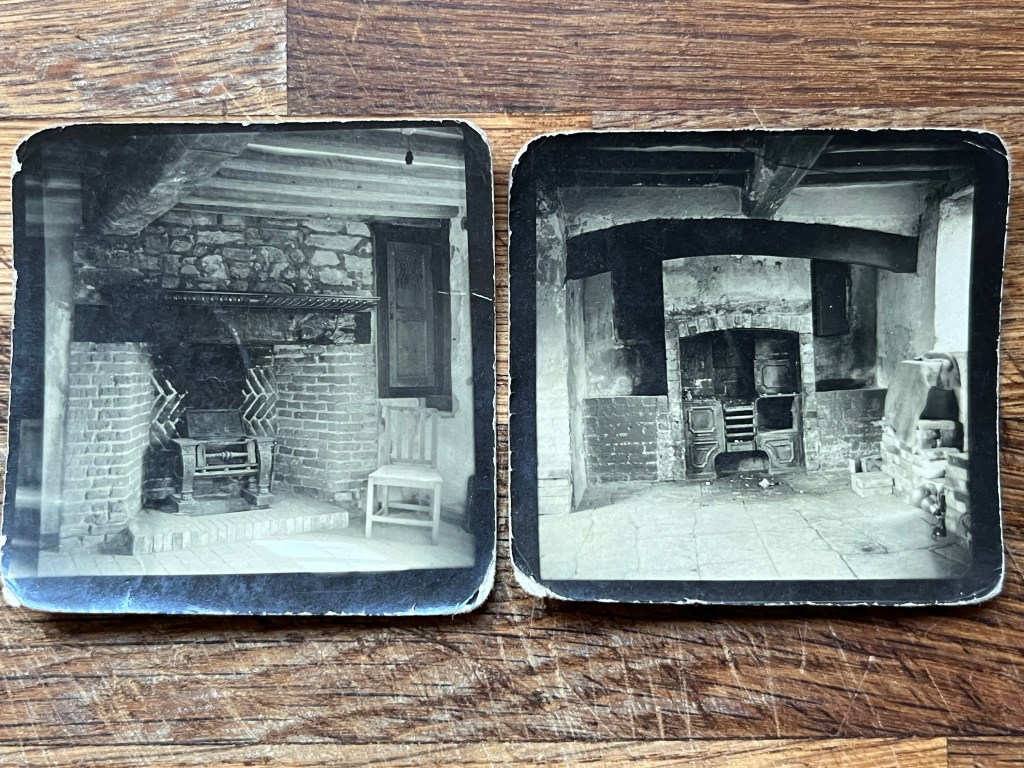
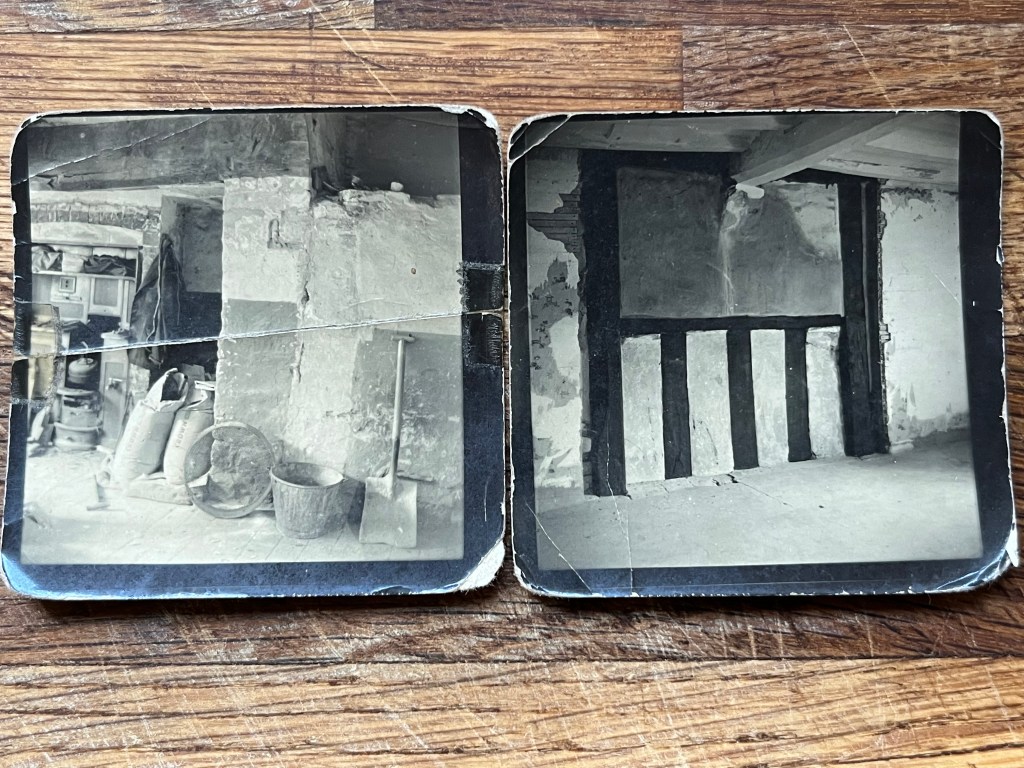
As readers of the Antique Dealers Research blog will know, antique dealers trading from and living in historic houses has been a consistent theme in the history of the antique trade (see blog posts March 23rd 2014; October 26th 2014; February 6th 2017; May 25th 2019; July 31st 2022) Such practices can be traced back to at least the 1920s, so C.W. Briggs was rehearsing an established tradition when he acquired ‘Kingscote’ in the 1940s.
There are quite a few family photographs in the archive, and some interesting family correspondence, all of which presents a very human picture of Cyril. Here he is (see below), I guess from the 1940s, together with a photograph of his National Registration Identity Card from the Second World War, and a small cache of un-used fuel rationing coupons from the period 1947-1948, issued for his motor car, registration VO8932.

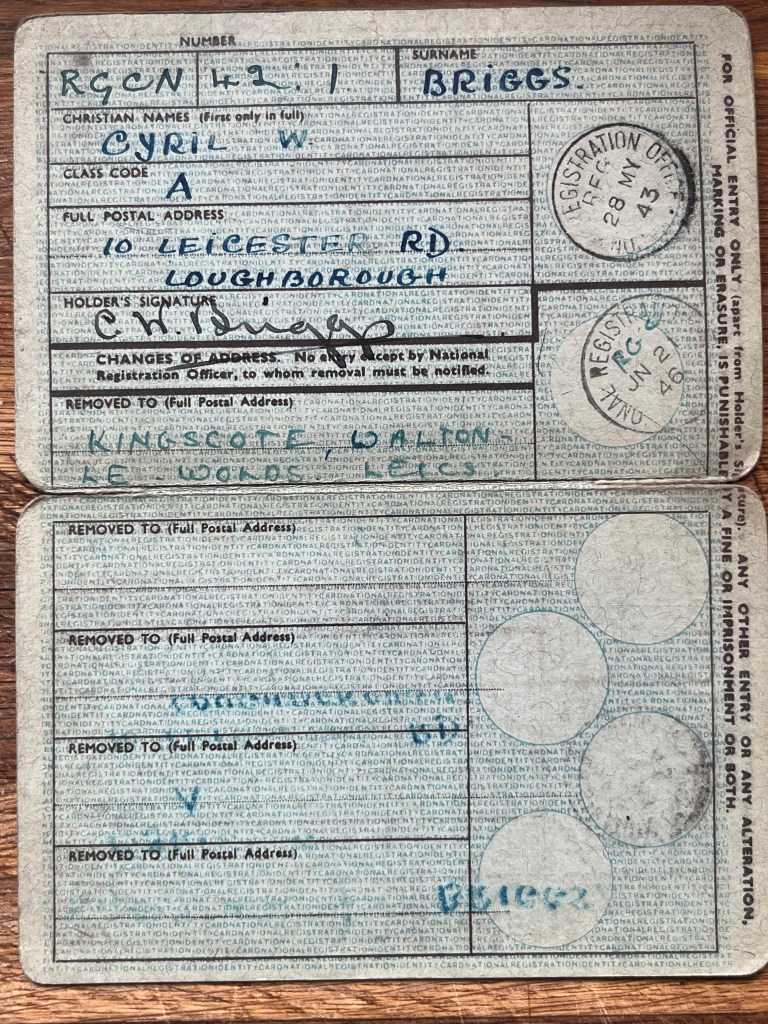
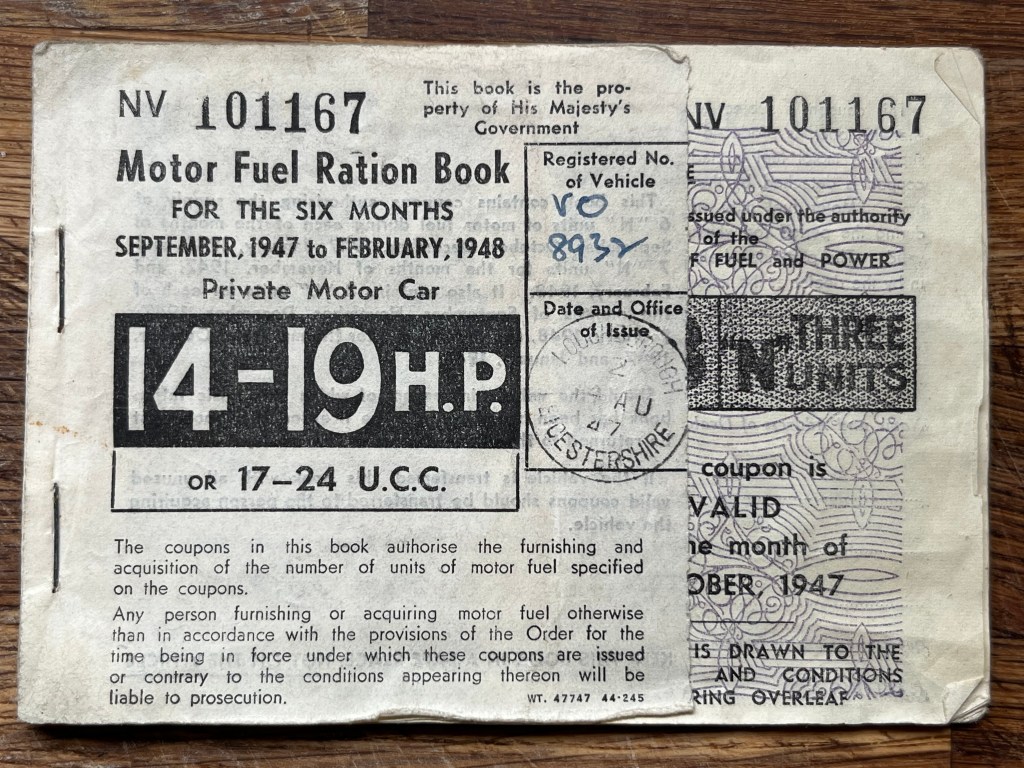
The stock books in the archive date from 1936 to 1940, (see below) and give a sense of the wide range of antiques that Briggs was selling in that period. There are some typically vague descriptions of objects, such as ‘Small Oil on Panel‘; ‘Oak chest‘ and a ‘China Bulb Pot‘, with very little detail in the descriptions. But Briggs seems to have been selling a very typical range of general antiques in the period, with lots of silver, pewter, ceramics and glass, together with the usual types of antique furniture.
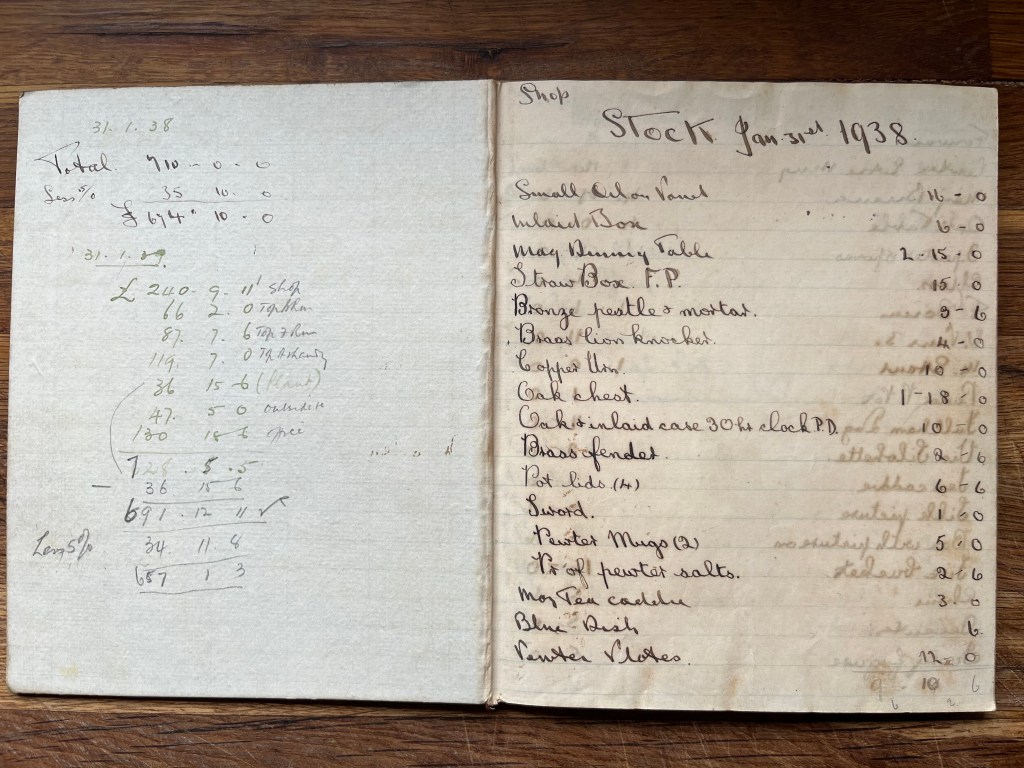

The other antique dealer business related archive material includes a sales book (undated) but from the mid 1930s, a ‘Creditors and Debtors’ book from the 1950s to 1970s, and a ‘Cash Book’ (1973-1975) – all very useful for the study of a mid-range, mid-20th century antique business.
Perhaps the most intriguing material in the archive are a few letters sent to Briggs in 1956 and 1958, relating to a ships’ figurehead. The initial letter (see below), from the well-known American antique dealers ‘Sacks Antiques Inc’ of Massachusetts USA, sent to Briggs on 12th September 1956, mentions a ‘figurehead’ that Briggs appeared to be negotiating to buy.
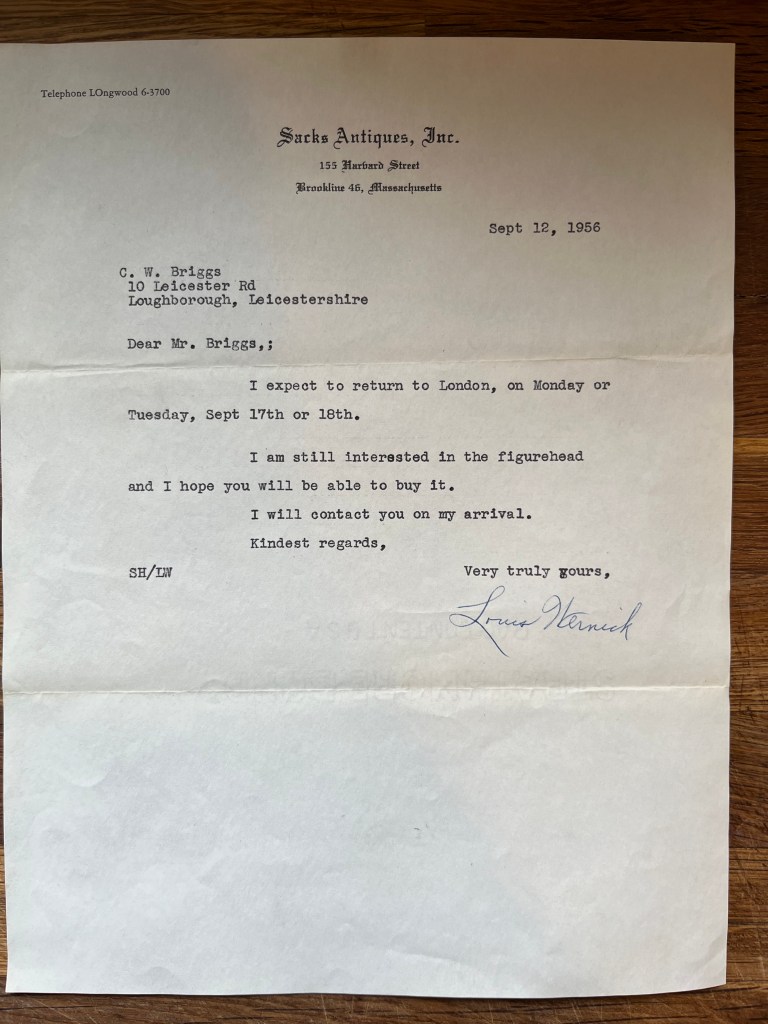
I guess this is all fairly standard in terms of antique dealer practices, and I’m aware of several antique dealers buying and selling antique ships figures heads in the period. According to a few other letters in the archive Briggs did indeed acquire the figurehead and sold it to an American dealer (probably Sacks?). It seems however, that the figurehead was quite an important thing; it was from HMS Cornwallis, which, according to the letter from the ‘Commanding Officer’ at H.M.C.S. Cornwallis, Department of National Defence, Canada, ‘is reputed to have fired the last shot in the American War of Independence’ (see below).

HMS Cornwallis was launched in 1813, a 74 Gun ship, she was involved in the American War of Independence, and later in the Crimean War (1853-56). She was converted into a jetty in 1865 and broken up in 1957. I’ve not been able to trace what happened to the figurehead from HMS Cornwallis, but the National Maritime Museum, Greenwich has a ship model of the HMS Cornwallis, built at the same time that the full-size ship was commissioned in 1813. Here’s a photograph (see below) of the ship model – you can just about make out what the figurehead looked like, so if anyone knows the whereabouts of the figurehead, I’d be very interested to hear.
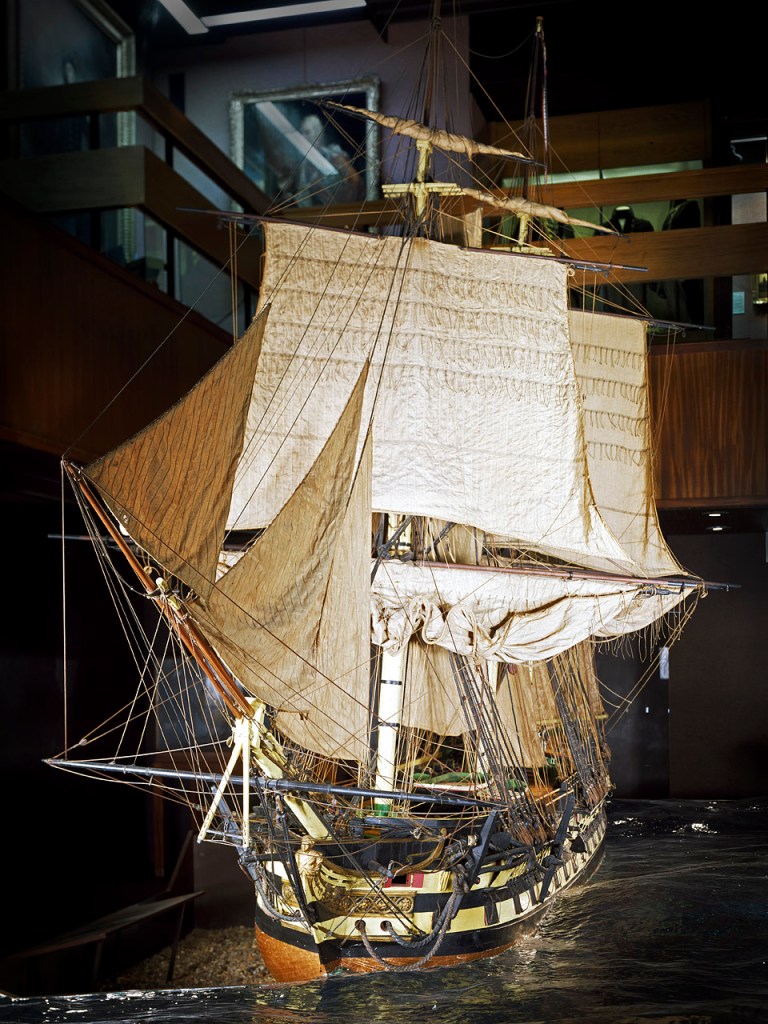
The C.W. Briggs archive material offers a fascinating view of the business of a mid-20th century antique dealer. It is more than the usual antique dealer archive material that we have at the University of Leeds (which are mainly stock books and business letter archives) in that it also gives us a very human insight into the life of Cyril William Briggs, antique dealer. The archive will of course be making it’s way to the Brotherton Library Special Collections at the University of Leeds in due course. And of course, I’ll post a little more on the intriguing 1928 ‘Old Masters’ exhibition and Briggs involvement in that exhibition in another blog post – do keep your eye on the Blog!
Mark
Leave a comment